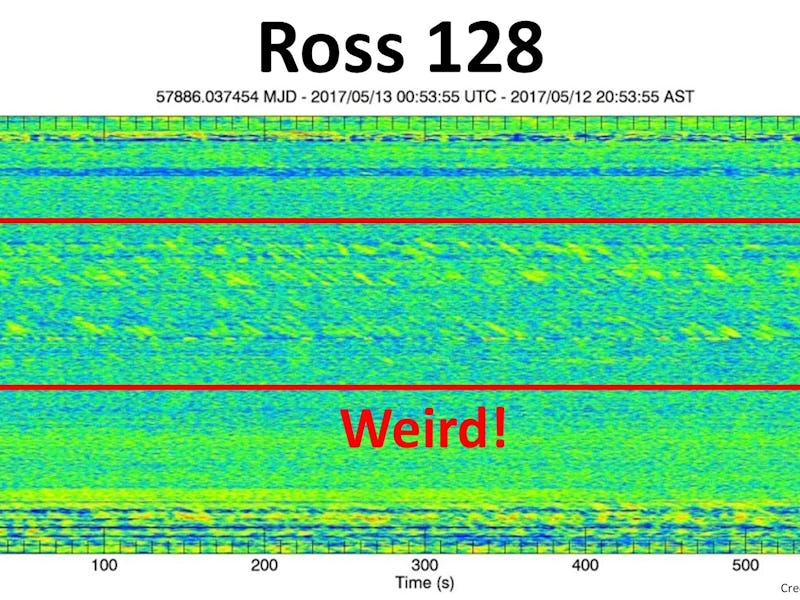Scientists Confirm That Strange, 'Weird' Space Signals Are Still Not Aliens
Red dwarf stars, like Ross 128, are still good places to hunt for extraterrestrial life.

Once again, it’s not aliens: Scientists have announced the recently detected “strange” signals coming from the red dwarf star Ross 128 were likely just interference from a high-orbiting satellite.
Scientists at the Planetary Habitability Institute trained the 1,000-foot-wide Arecibo Telescope on the dim star in hopes of explaining the quasi-periodic pulses. They originally proposed three reasonable possibilities, but were not convinced by any of them. After re-observing the star, the researchers announced last week that a geostationary satellite was the likely culprit.
There is a specific location in space over 22,000 feet above Earth where satellites match Earth’s orbit and spin with the planet, called geostationary orbit. This is especially useful for continually monitoring a specific part of Earth — say a government surveillance or earth sciences satellite. The scientists believe that they picked up transmission from these fixed satellites, whose location happened to be between Earth and Ross 128.
“The best explanation is that the signals are transmissions from one or more geostationary satellites,” wrote Planetary Habitability Institute director Abel Méndez, in a statement. “This explains why the signals were within the satellite’s frequencies and only appeared and persisted for Ross 128; this star is close to the celestial equator where many geostationary satellites are located.”
Méndez combined observations taken from the Arecibo Telescope, built inside a massive sinkhole in Puerto Rico, with observations taken by telescopes in California, Virginia, Chile, and Spain to eliminate the other two best explanations. The researchers originally theorized that solar flares from Ross 128 could have sent the unique signals into space. Another possibility was that the scientists thought they might have been picking up signals from a different star that happened to be near Ross 128, though they could not account for any such object.
Aliens, however, were “at the bottom of many other better explanations,” explained Méndez, through he lacked the evidence to eliminate the possibility of an extraterrestrial source.
“Statistically, this is always the last consideration, not because such civilizations are impossible, we humans are an example, but because other possibilities had frequently arisen and no extraterrestrial civilizations have been detected yet,” wrote Méndez. “Nevertheless, scientists need to be open to all possibilities and explore them.”
Space is home to billions of galaxies, each with hundreds of millions of stars, so it’s expected that Earth receive some transmissions that are peculiar, new, or puzzling. For instance, after 40 years, scientists recently identified the likely source of the “Wow! Signal,” a short, unexpected burst of signals some scientists interpreted as having an intentional order, and perhaps a message. This year, researchers published evidence that these enigmatic radio signals came from a passing a comet.
The 1,000 -foot wide Arecibo Telescope in Puerto Rico.
Scientists at the Planetary Habitability Institute will continue observing red dwarf stars like Ross 128 as part of their campaign to understand star systems that could potentially harbor conditions suitable for life, like planets with liquid water. Red dwarf stars are far cooler than our sun and burn through their finite hydrogen fuel less slowly. Accordingly, they live 1,000 times longer than the sun, which would give any nearby planet a good chance at developing life, whether primitive or intelligent.